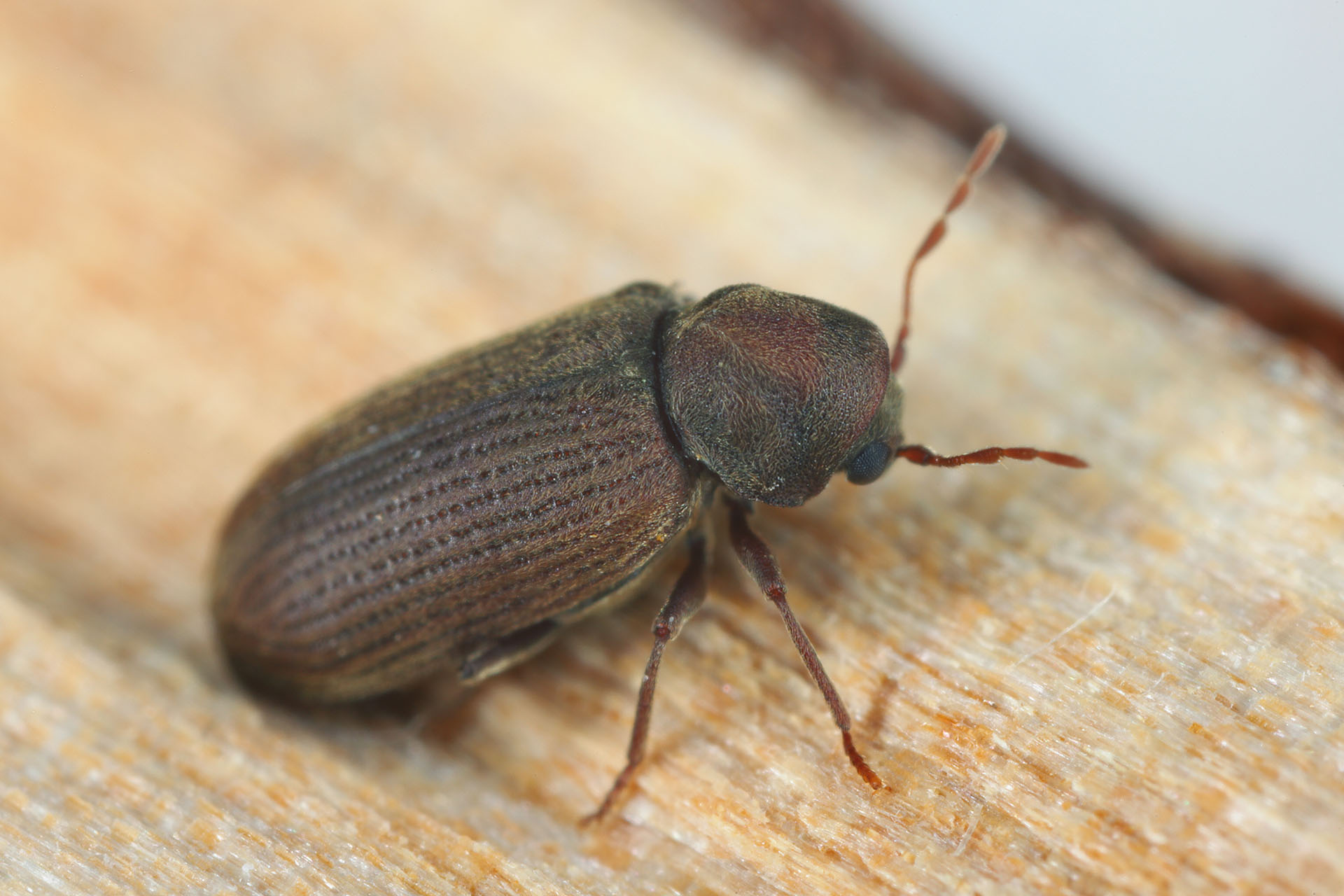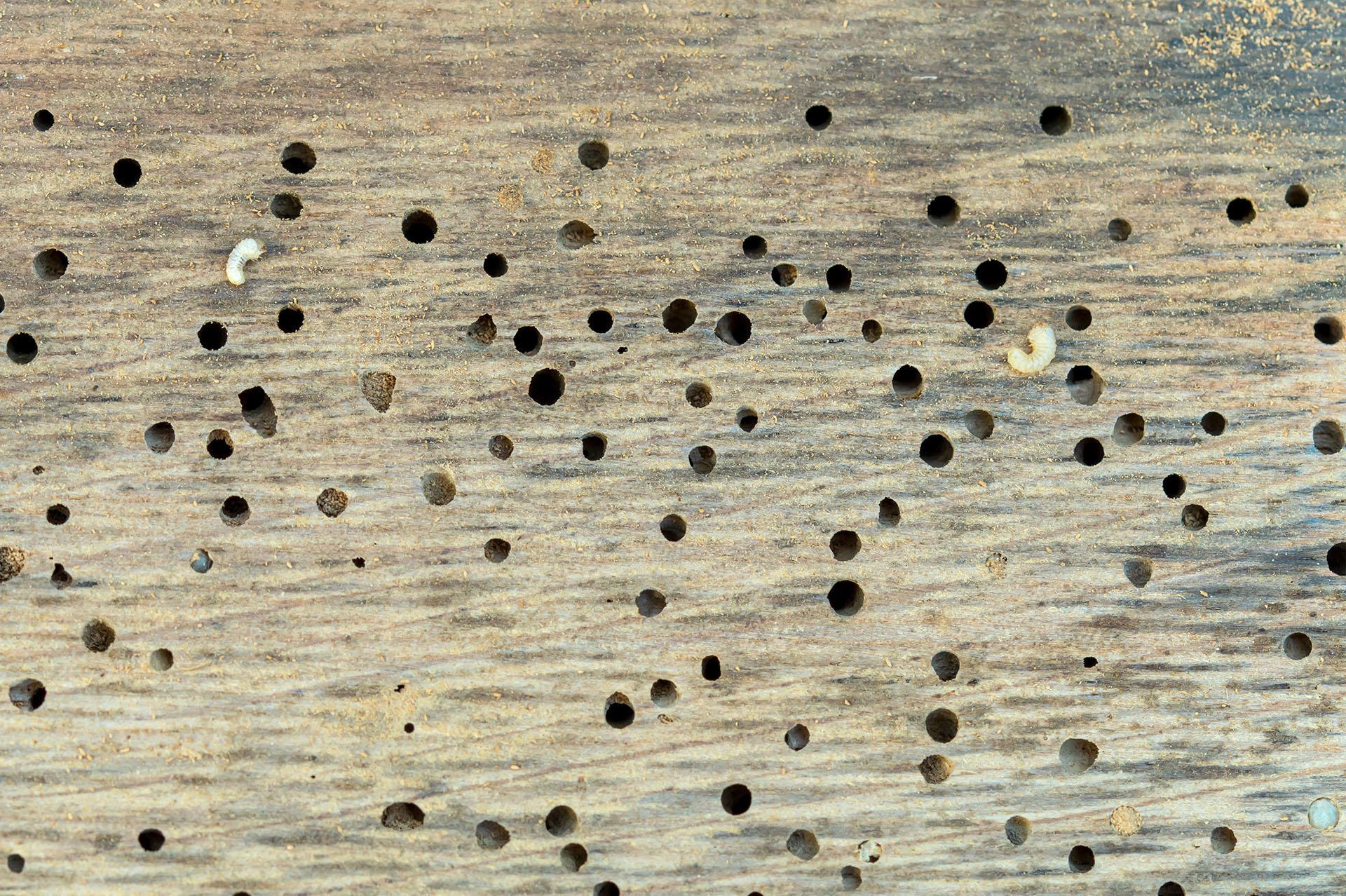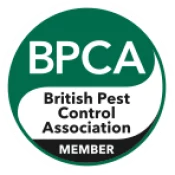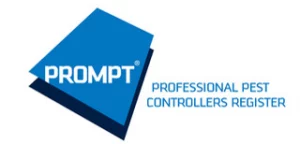Woodworm Pest Control Services

Woodworm Pest Control Services
Woodworm can quietly weaken timbers in homes and commercial buildings. If left untreated, larvae can reduce wood to a fragile shell, leading to costly repairs and, in severe cases, structural risk.
At iX5 Pest Control, we provide professional woodworm pest control, from accurate identification and moisture management to safe, effective treatment and prevention. If you’re comparing insect issues more broadly, our Insect Pest Control hub explains how we handle other common pests, too.
Why woodworm is a serious problem
Hidden structural weakening
Larvae tunnel within joists, rafters, battens, floorboards, and wooden furniture, leaving only a thin outer “skin” of timber. This internal loss of substance reduces load-bearing capacity and, if extensive, can affect floors, roofs and stairs. Minor cosmetic damage can mask serious internal loss, so a professional survey is essential.
Moisture makes everything worse
Elevated timber moisture, whether from leaks, condensation, poor ventilation or bridged insulation, accelerates attack and can invite secondary decay (e.g. wet rot). Treating woodworm without fixing damp often leads to recurrence. Effective woodworm pest control always includes moisture management.
iX5 Pest Control
- 7 Days A Week Service
- Weekend & Evening Appointments
- Domestic & Commercial Pest Control
- Contactless Payment Methods
- Free Initial Survey
Additional Services

Different species, different risks
- Common furniture beetle typically creates 1–2 mm round holes and can be widespread in general building timbers.
- Deathwatch beetle favours damp, often fungus-affected hardwoods in older properties; activity may persist for years if moisture isn’t corrected.
- House longhorn beetle produces larger, often oval holes and can severely damage softwood roof timbers. Correct identification influences our treatment approach, urgency and monitoring.
Active vs historic – easy to misjudge
Old “flight holes” will remain visible permanently after an infestation has died out. Conversely, fresh frass can be missed if areas aren’t inspected regularly (e.g. lofts). Determining whether the issue is active prevents unnecessary works, or ensures urgent action where needed.
Safety and compliance in sensitive buildings
In listed or historic buildings, fabric conservation and bat protection requirements shape what products and methods can be used, where and when. A compliant plan protects the building, its occupants and protected species.
Financial and resale implications
Surveyors and lenders may flag woodworm in mortgage reports. Demonstrable professional treatment and other measures can smooth sales, insurance and refinancing.
Refurbishment spreads risk
Disturbance during renovations: lifting floors, adding insulation, blocking vents – can trap moisture and create favourable conditions. Planning ventilation and moisture control alongside treatment avoids re-infestation.
Not just “old furniture”
While furniture can be affected, structural and fitted timbers (skirtings, door linings, roof members) are often at greater risk. Ignoring structural timbers can lead to costly remedial works later.
If you manage multiple properties and want proactive cover, our Commercial Pest Control Contracts can include scheduled inspections that identify wood-boring activity early.
Signs you may have woodworm
Fresh exit holes
Small, round holes (1–2 mm) are typical of the common furniture beetle. Larger or slightly oval holes can indicate other species (e.g. house longhorn). Fresh holes look clean and sharp at the edges; old holes often appear softened or dusty.
Frass (wood dust)
Look for fine, sand-like frass beneath timbers, on sills, or caught in cobwebs. For common furniture beetle, frass feels gritty when rubbed between fingers; for house longhorn, it can appear stringy or fibrous. Fresh, pale frass suggests recent activity; darker frass can be historic or disturbed.
Timber condition
When lightly probed with a bradawl or screwdriver, affected wood may feel brittle, crumbly or “honeycombed” beneath the surface. Skirtings, joists, roof timbers and floorboards are common risk areas.
Beetles or larvae
Adults are often noticed on windowsills in late spring/summer. Larvae are rarely seen because they live inside the timber.
Sound clues
In older, damp hardwoods, deathwatch beetle may produce a tapping or ticking sound during quiet periods (typically spring).
Location patterns
Lofts, under-floor voids, cellar timbers, and areas near plumbing leaks, condensation or poorly ventilated spaces are more vulnerable. Insulation that bridges eaves/soffit ventilation can trap moisture and increase risk.
Furniture & fixtures
Antique or second-hand furniture, picture frames, stair components and door linings can harbour woodworm. Check undersides, joints and end grain where adults prefer to lay eggs.
Monitoring tips
Gently vacuum or brush away existing frass, then re-check after a few weeks (particularly in May–September) for new deposits. Paper or light card placed beneath suspect timbers can help reveal fresh fall-out.
Not sure? Book a quick survey via our contact page and we’ll confirm active vs historic attack and the right next steps.
The woodworm lifecycle (why problems persist)
Eggs (surface stage)
Adult females lay clusters of eggs in cracks, pores and end grain. This stage is short (typically a few weeks), but successful egg laying depends on timber moisture and surface condition.
Larvae (feeding/tunnelling stage)
After hatching, larvae bore into the timber and feed on the starch and cellulose. This is the longest stage and can last from 9 months to several years, depending on species, timber type and moisture levels. Most structural damage occurs here, out of sight.
Pupae (near-surface stage)
Mature larvae move closer to the surface and pupate in a small cell. This lasts a few weeks before the adult emerges.
Adults (emergence/flight stage)
Adults bite their way out, creating visible flight holes and shedding frass. Emergence in the UK is most common in late spring and summer. Adults live for a short period, usually days to a few weeks, to mate and lay eggs, restarting the cycle.
Seasonality & moisture
While emergence is seasonal, larval feeding continues year-round inside the wood. Elevated timber moisture accelerates development and prolongs activity; drying timbers slows or halts the lifecycle.
Breaking the cycle
Effective control targets both the insect and the cause:
- Residual insecticidal treatment to affected timbers interrupts the larval stage and protects against re-infestation.
- Moisture management (ventilation, leak fixes, condensation control) makes conditions unfavourable for egg laying and larval survival.
- Monitoring after treatment helps confirm no new frass or holes appear.
Active vs historic
Old flight holes can persist for decades. Indicators of current activity include fresh, pale frass, sharp-edged new holes, and seasonal adult sightings. Our survey distinguishes these so you only treat when necessary.
Our woodworm pest control process
- Initial survey – We confirm whether attack is active or historic, identify the species involved, assess timber condition and moisture sources, and prioritise any structural risks.
- Targeted treatment – We apply HSE-approved residual insecticide/biocide to affected timbers (and, where appropriate, into bore holes) to control active larvae. Any structurally unsound sections are flagged for repair or replacement.
- Proofing & prevention – Practical measures to keep timbers dry and ventilated, with routine monitoring advice. Where work is near potential bat roosts, we follow UK conservation guidance and use bat-appropriate methods.
- Follow-up checks – Where required, we revisit to verify control, review frass/flight-hole activity and provide a clear report with next steps. Insurance-backed guarantees can be discussed for structural treatments (where eligible).
Timescales: survey to sign-off
- Survey visit: typically, 30–60 minutes (longer for complex or multi-area sites).
- Treatment appointment: commonly 2–4 hours, depending on access and area size.
- Drying & re-entry: re-entry is usually possible once treated areas are dry and ventilated (your technician will advise on the day).
- Follow-up inspection: if required, we’ll schedule a check after a suitable monitoring period to confirm control and advise on any additional steps.
Aftercare & prevention
Good aftercare keeps woodworm from coming back. The most important thing is managing moisture: keep lofts and under-floor spaces well ventilated, make sure air bricks and soffit vents aren’t blocked, and deal with leaks or condensation promptly. Simple housekeeping helps too. Store timber and cardboard off the floor and away from damp surfaces, and don’t let insulation bridge eaves ventilation. It’s worth keeping an eye out through spring and summer; a quick once-over of loft timbers or skirtings every few weeks will tell you if new frass is appearing. In older or listed buildings, taking occasional moisture readings can be a useful early-warning system. If you notice anything new, or you’re unsure, just get in touch through our contact form below and we’ll advise on the next step.
Why choose iX5 Pest control for woodworm pest control?
- Qualified, insured technicians using BPCA-aligned best practice
- Local expertise in regional risk species and building types
- Safe, effective treatments tailored to your property
- Transparent advice on moisture control to stop problems at source
- Written reports after every visit and guarantees where eligible
Service areas
We provide woodworm pest control across Northamptonshire and beyond, including: Northampton, Milton Keynes, Daventry, Rugby, Market Harborough, Towcester, Brackley, Wellingborough, Kettering, Corby, Olney, and surrounding areas. For multi-site coverage and routine inspections, consider our Commercial Pest Control Contracts.
Noticed fresh flight holes or frass? Contact us before the damage worsens. Call 01604 328545 for an initial chat, or email us at [email protected] alternatively you can use the contact form below to book your survey and we’ll get you scheduled in.
iX5 Pest Control – Trusted with results!
Woodworm FAQs
Most frequent questions and answers
How to treat woodworm?
Book a professional survey to confirm active woodworm and the species. Treatments typically involve applying an HSE-approved residual insecticide to affected timbers and fixing moisture issues (ventilation, leaks, condensation). Severely weakened sections may need targeted repairs. We provide a written report and, where eligible, a treatment guarantee.
Is woodworm dangerous to my home?
Yes, long-term, untreated activity can weaken structural timbers (joists, rafters, floorboards). Early identification and treatment reduce cost and disruption.
How long does woodworm treatment take to work?
Most adult emergence ceases after treatment once the product is dry and active on/in the timber. We often recommend a follow-up check after a monitoring period to confirm no fresh activity.
Do I always need to replace affected timber?
Not always. Many infestations are controlled with treatment plus moisture management. Replacement is reserved for sections that are structurally unsound.
What does woodworm look like?
You’ll rarely see larvae inside the wood. Typical signs are small round to oval exit holes (about 1–2 mm for common furniture beetle; larger/oval for house longhorn), fine frass beneath timbers, and areas of timber that feel brittle or crumbly when probed. Adults may be found on windowsills in spring/summer.
How to get rid of woodworm?
Confirm activity, treat with a residual insecticide applied by trained technicians, and remove damp conditions through ventilation and repairs. Keep monitoring for fresh frass/holes and follow our aftercare guidance to prevent re-infestation.
Is treatment safe around bats and historic buildings?
Bumble bees gather pollen and feed it to their young. Because of this, they need to be able to access a range of flowers and plants. They also trap and absorb nectar with the hair on their tongue. If you ever happen to find a bumble bee looking exhausted with no bee friendly flowers around, it helps to feed it a 50/50 mix of white sugar and water which provides a well needed energy boost. It is strongly advised not to give them honey or brown sugar.










